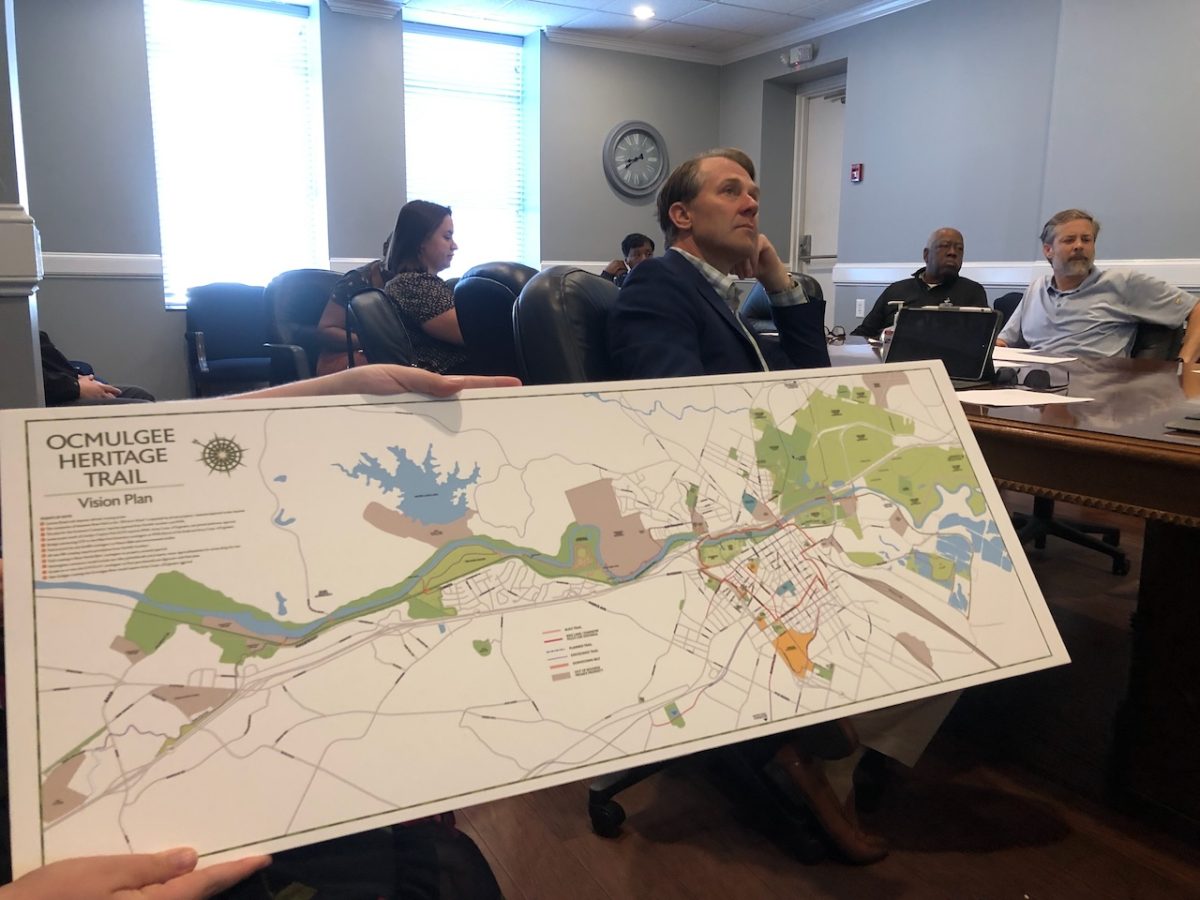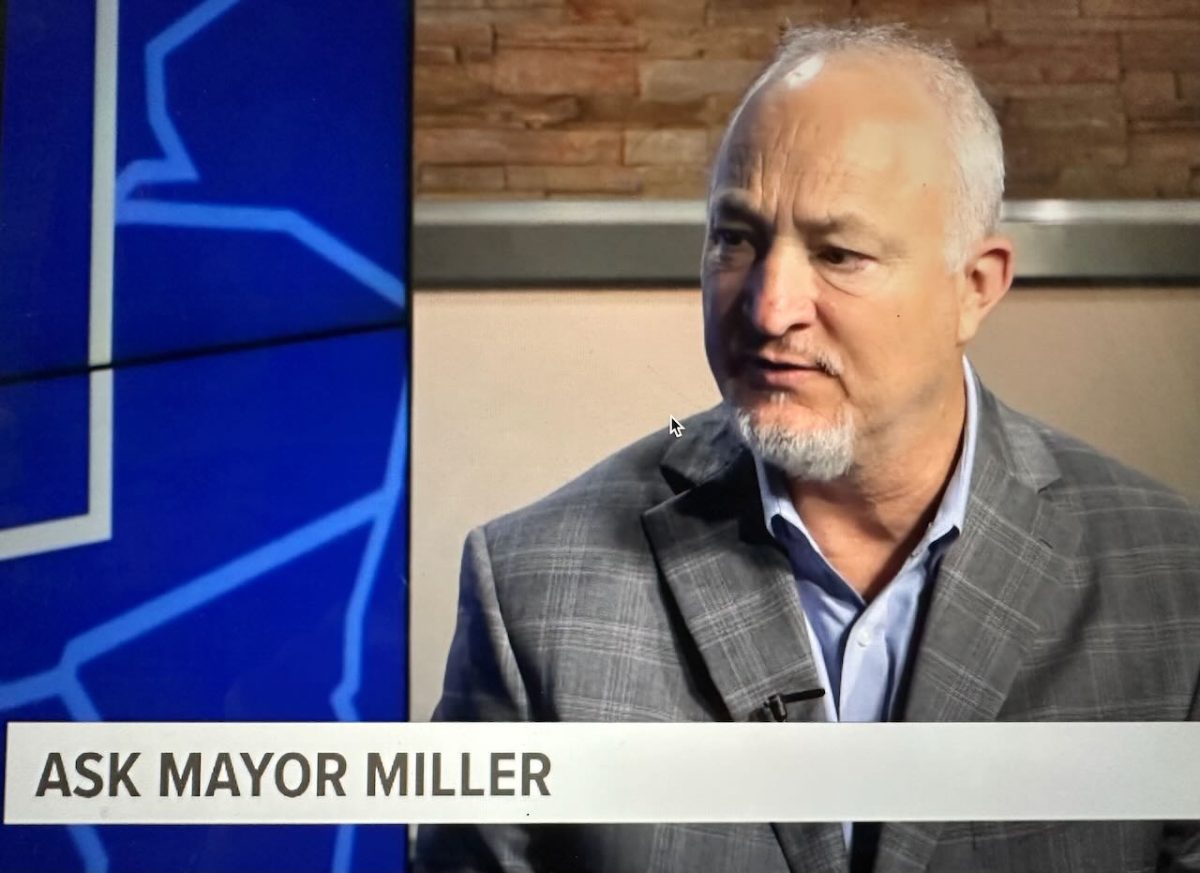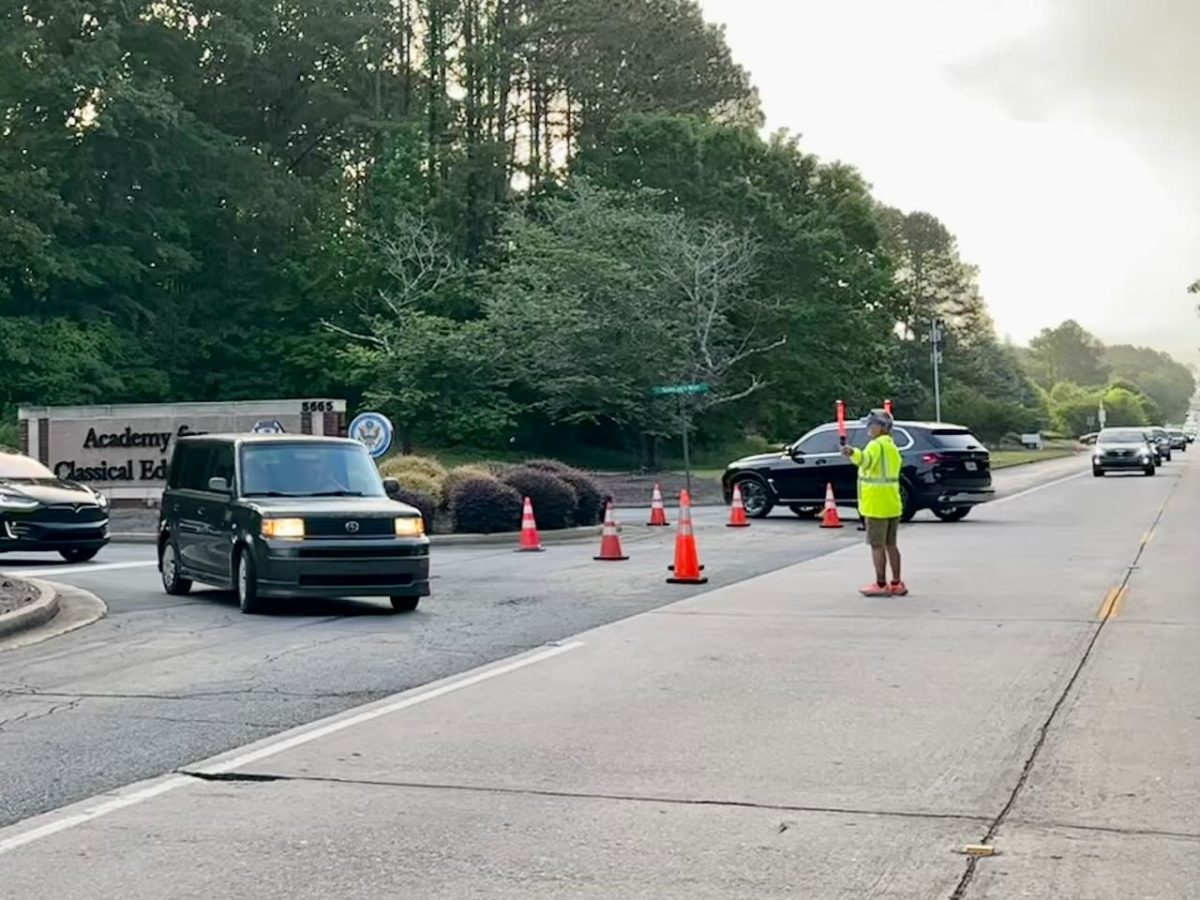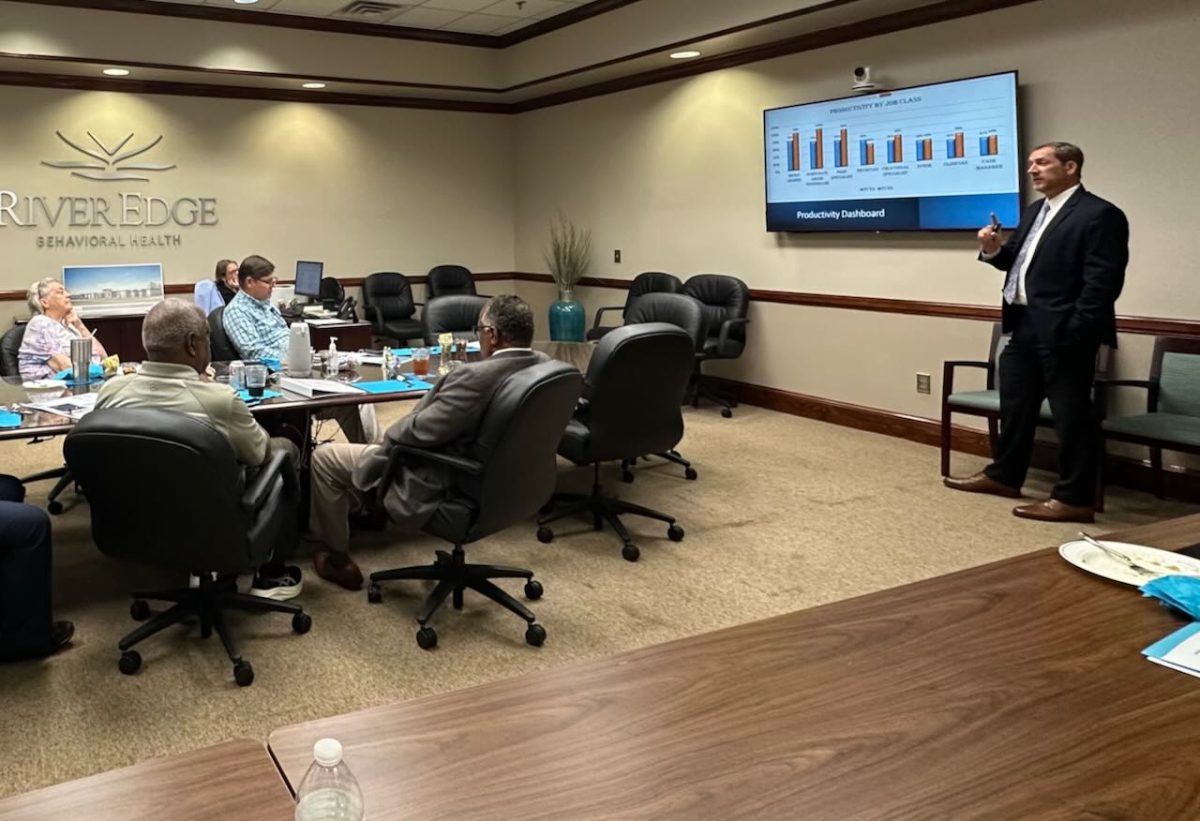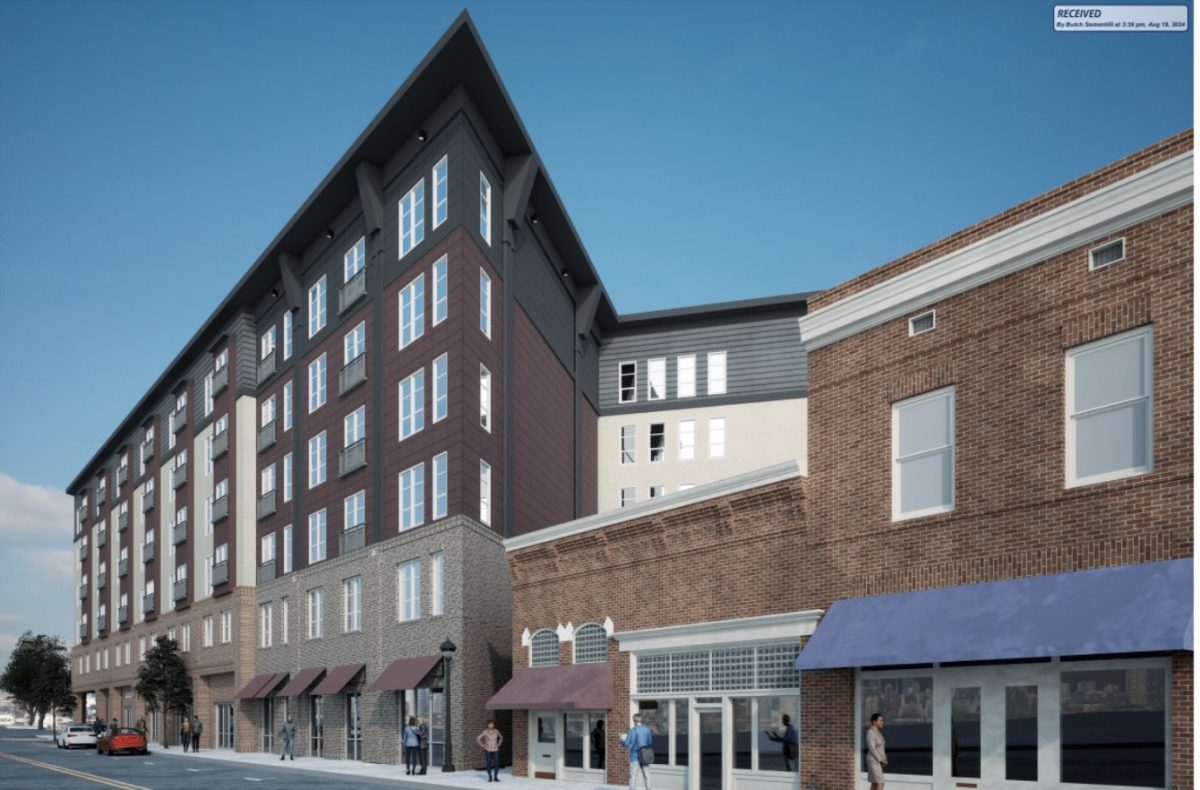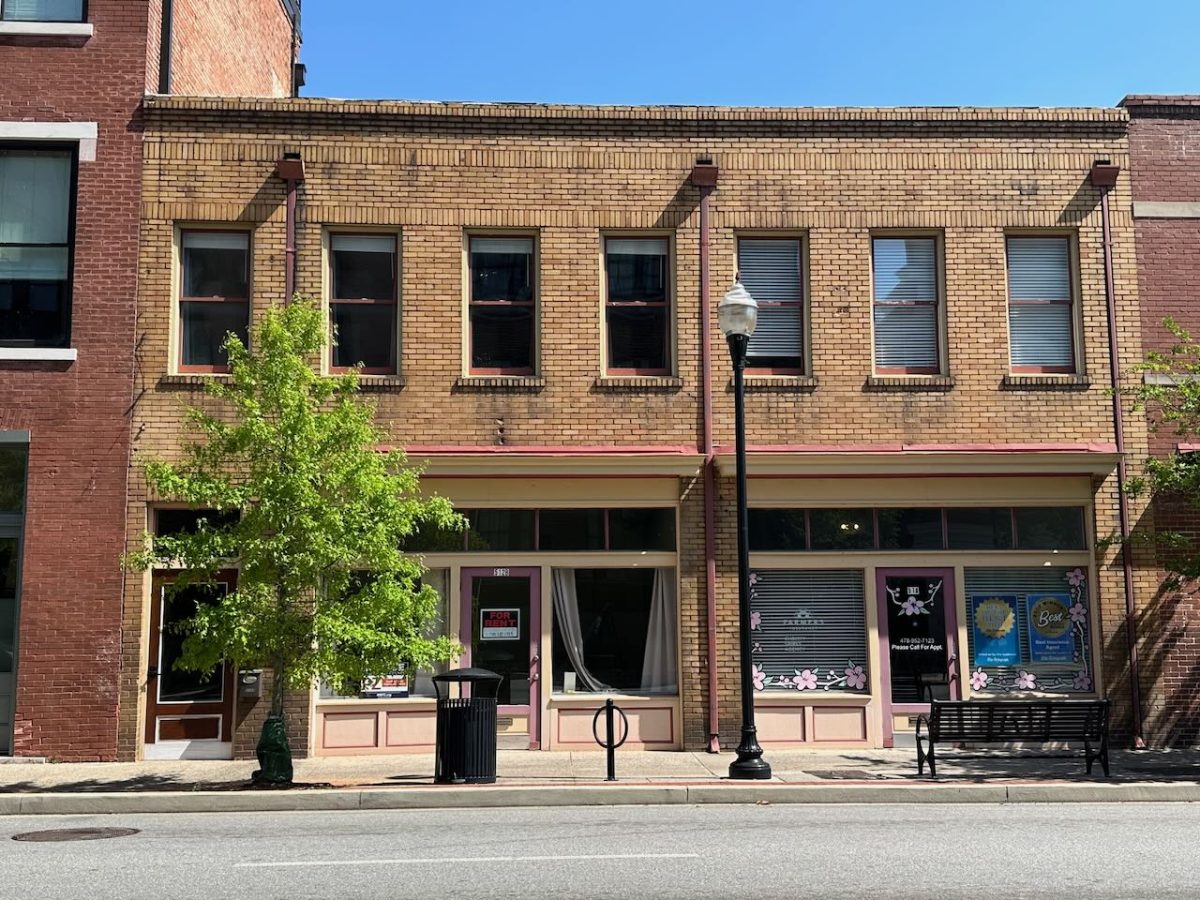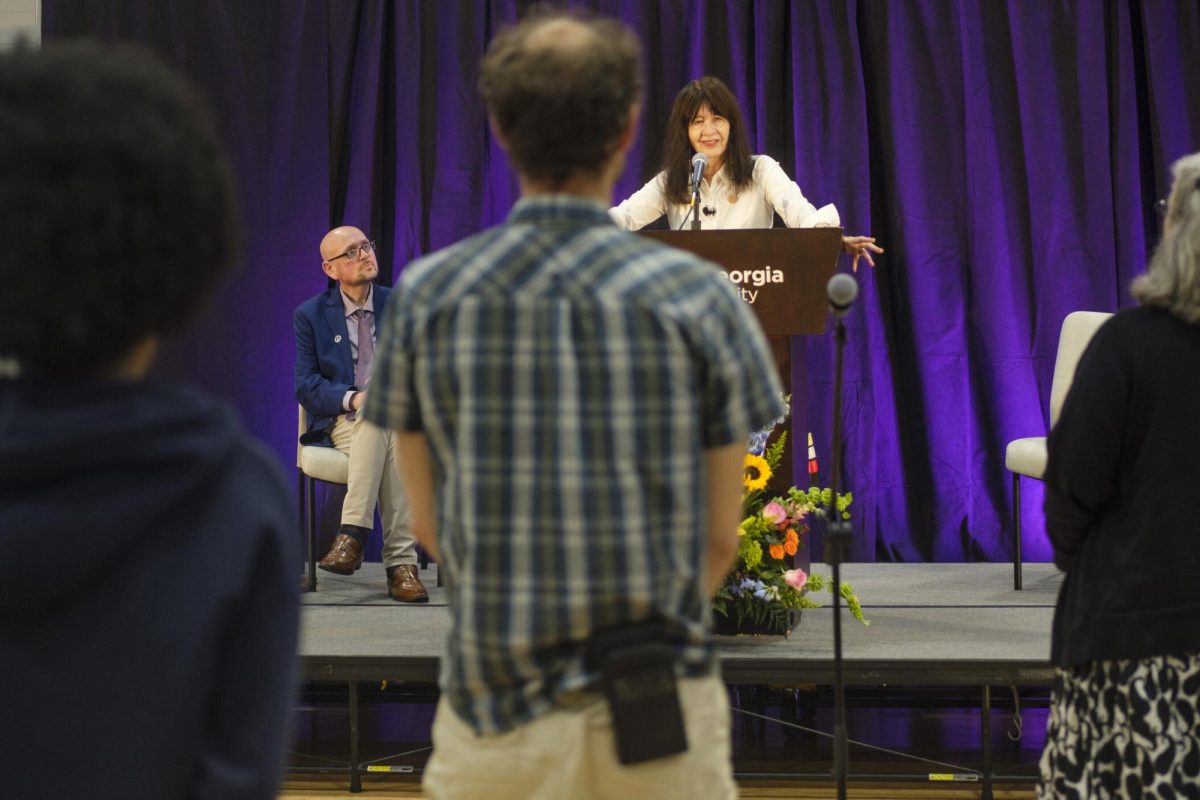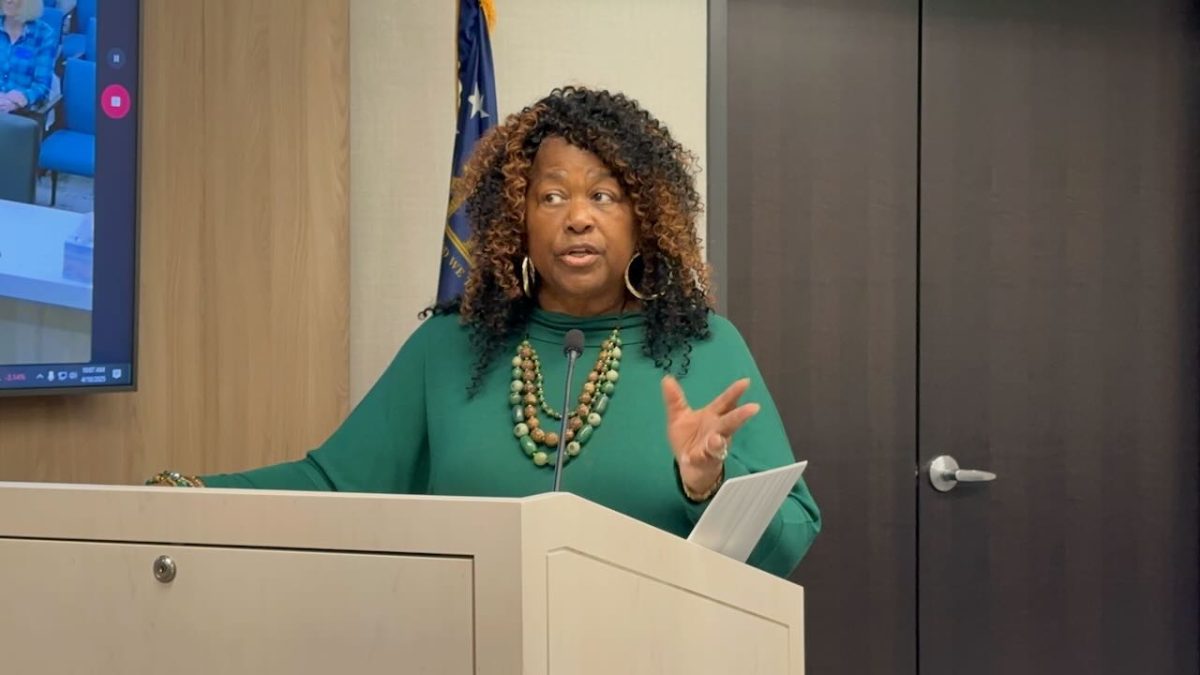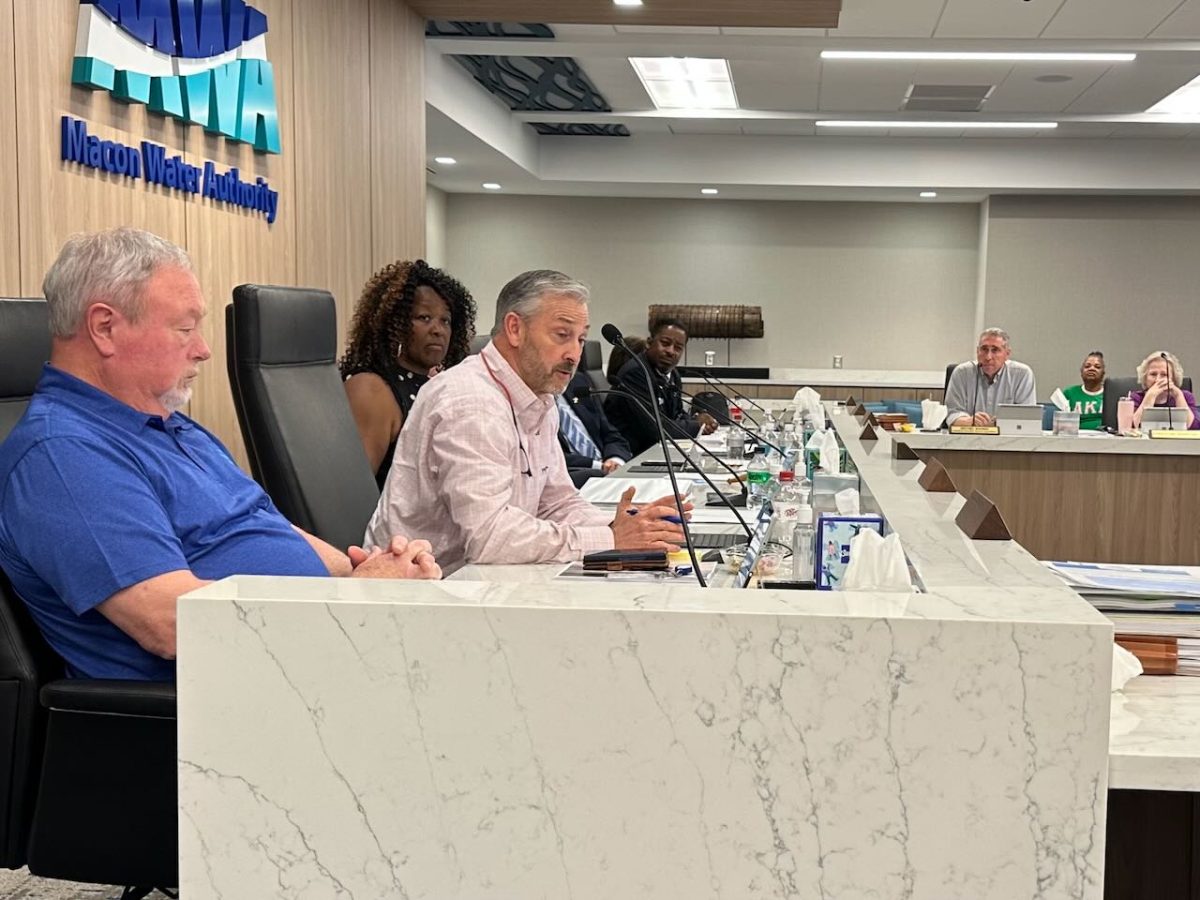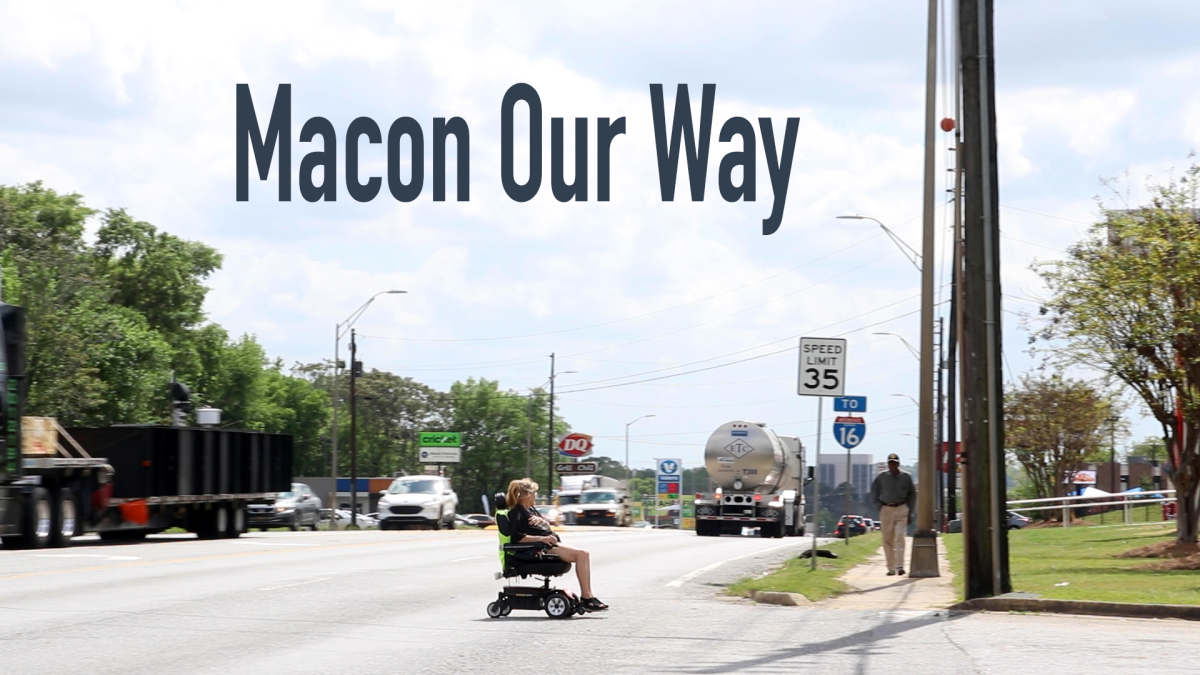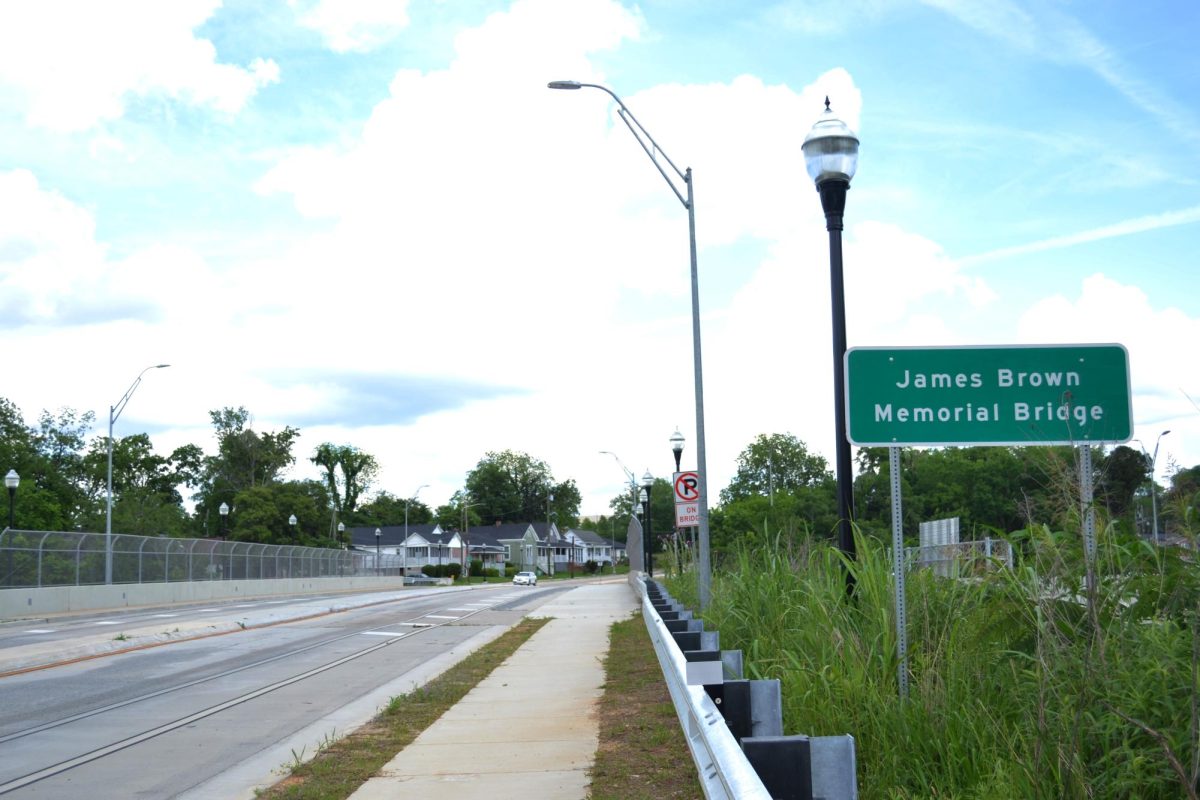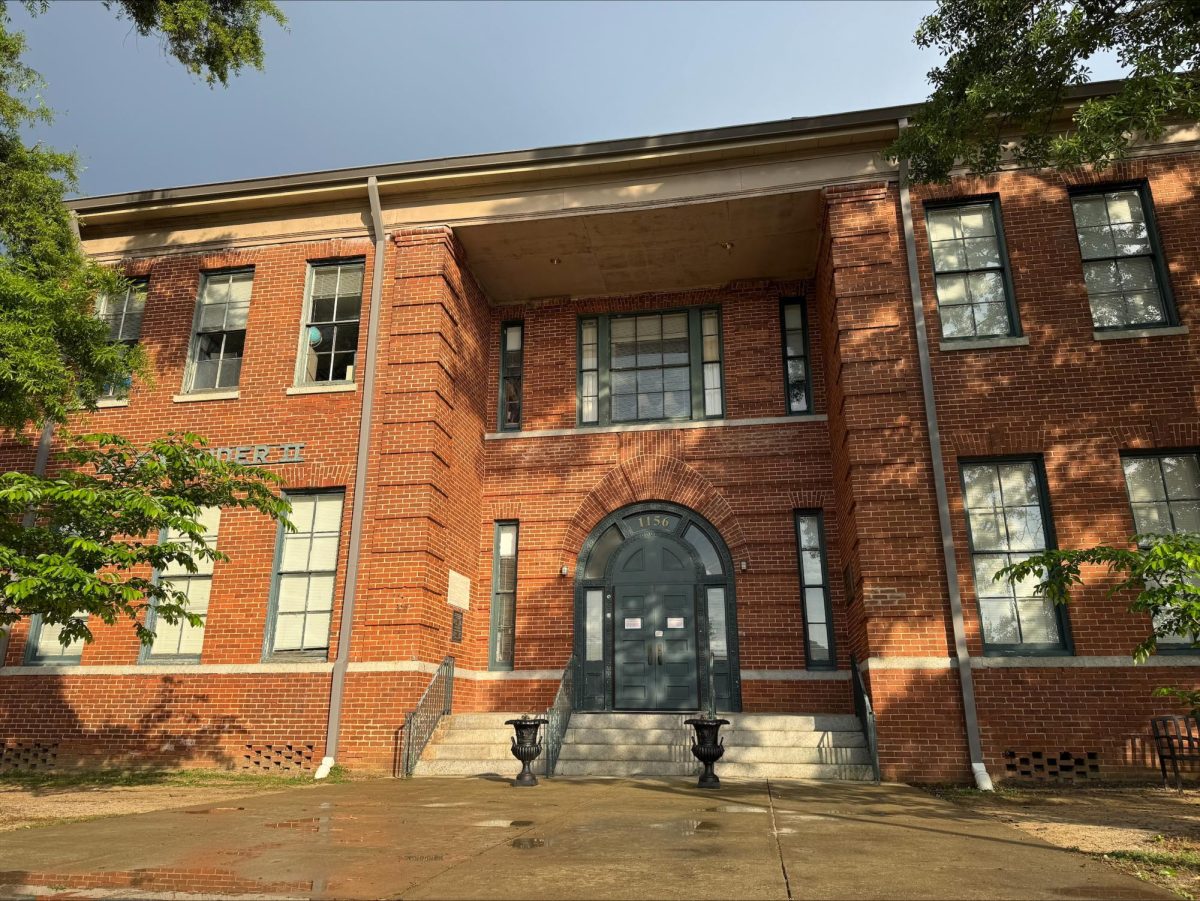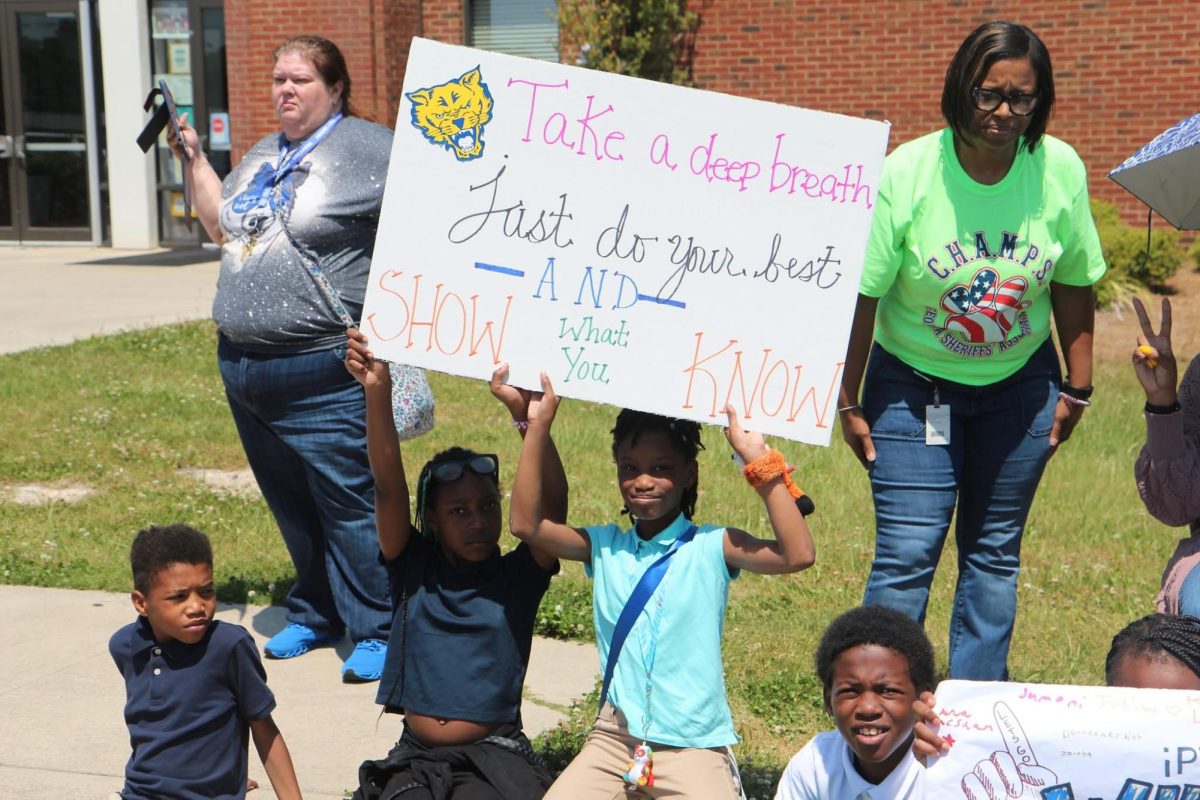If Ocmulgee Heritage Trail visionaries have their way, the riverwalk could eventually extend from north Macon all the way to Milledgeville on 33 miles of abandoned railway.
At Thursday’s work session of the Macon-Bibb County Urban Development Authority, former UDA chairman Chris Sheridan laid out recently drawn plans that take the trail to Amerson Water Park and up to Bass Road, loop back into the Ocmulgee Mounds National Historical Park and downtown, as well as lengthen the trail past the levee in Carolyn Crayton Park to near the old landfill around Walker Road.
“It’s another world down there. It’s gorgeous,” Sheridan said of that wilderness around 11th Street just outside of the urban core of downtown.
There are multiple logistical hurdles to leap, such as convincing Norfolk Southern to permit the trail to encroach a few feet on their right-of-way, and having the Masonic Home agree to the trail hugging the river on its land, he explained.
In 1997, the concept of a 35-mile Ocmulgee Heritage Greenway from Juliette to Warner Robins was born. Over the years, Macon moved ahead and completed its Phase 1 of the Ocmulgee Heritage Trail in stages. Now Sheridan, and retired NewTown leader Mike Ford, Bill Causey and others want to connect more of the city to the river.
Sheridan doesn’t think he’ll be alive to see it all come to fruition, but NewTown Macon and other organizations are putting plans in place now to apply for grants and funding.
The UDA’s endorsement and inclusion of the project in the next Macon Action Plan is important, Sheridan said.
“Especially for funding from out-of-town organizations and entities with the state, it’s helpful to have your endorsement,” he said.
UDA Executive Director Alex Morrison agreed.
He imagines a trail network that could eventually reach Macon Mall and the amphitheater.
“A master plan can move us up for grant funding, and for federal funds it’s absolutely a requirement,” Morrison said.
NewTown plans to observe National Trails Day on June 1 by partnering with Bike Walk Macon and other entities to offer behind the scenes tours of the trail to show which parts have been closed for highway construction, what is accessible now and preview what could be coming.
“Hopefully 30 people on each tour will see what’s going on,” said NewTown’s Digital Content Manager Hailie Poppell.
Plans are also in the works to have a master plan presentation at Fall Line Brewing Company, she said.
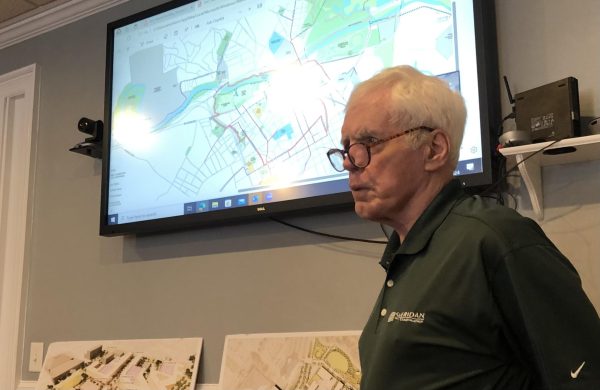
Securing final approval from stakeholders such as the railroad and private landowners will be a challenge,. Sheridan said.
“When we get around to it, it’s going to depend on the personalities at the time,” he said.
A pedestrian bridge to connect the east and west banks of the Ocmulgee River is a long range goal, but would be “mighty expensive.” Sheridan said.
There will be at least one pedestrian bridge over the river. Once the Georgia Department of Transportation finishes construction of the Interstate 75/16 interchange, it plans to abandon one of the temporary flyover bridges built to keep traffic moving during the lengthy project.
UDA Chair Kay Gerhardt lamented that road construction has diminished the number of people using the trail over the last decade.
“We’ve kind of forgotten how much traffic we had on that trail, how much we used it,” she said. “They cut down so many trees. It used to be kinda shady, and since it hasn’t been used it looks kind of derelict.”
“It’s in bad shape right now,” UDA board member Ryan Griffin added.
Sheridan said there is money available to link the trail in Rose Hill Cemetery on the west bank to the east bank with a new leg under the Spring Street bridge.
“We’re clearing, but the homeless are winning down there right now. It’s a very unpopulated part of the trail,” he said. “The only way the homeless will leave is if citizens use it, and they’ll want to go someplace else.”
Bicentennial Park contractor selected
Groundbreaking is imminent on Bicentennial Park off Main Street in the Mill Hill: East Macon Arts Village.
Macon-Bibb County’s Procurement Department selected Renfroe Construction as the winning bid for the project that will commemorate the community’s history from Native American origins through the 200 years since Macon’s founding.

The Urban Development Authority approved Wimberly Treadwell’s park design at its Thursday work session.
“Tell them to get to work,” Gerhardt said.
Long before the Bicentennial Committee designated the park as its signature project, UDA purchased wind sculptures for the property that is adjacent to its Arts Village project with the Macon Arts Alliance. That artwork has been in storage awaiting completion of the design.
The park also will feature Indigenous artwork including a representation of a stickball player. The field meets the dimensions for playing stickball, and can be used for demonstrations of the official game of the Muscogee (Creek) Nation, which plans to build a cultural center in the old DeWitt McCrary house that was saved from the wrecking ball in recent years.
The Bicentennial Committee also purchased a brick peace pole designed for the Atlanta BeltLine’s 2017 exhibition that was constructed by Macon artists Alexis Gregg and Tanner Coleman of AnT Sculpture and Design, Morrison said.
The Bicentennial Committee raised the bulk of the funding for the park, and grant money is providing new shade trees for the property. Bicentennial donors also will be listed on the grounds.
Groundbreaking is expected next month with the park’s completion set for this fall.
Bicentennial Park is expected to be on the gateway to the new Ocmulgee Mounds National Park, if approved by Congress, and across from Macon-Bibb County’s proposed East Bank development now in the planning stages.
— Civic Journalism Senior Fellow Liz Fabian covers Macon-Bibb County government entities and can be reached at fabian_lj@mercer.edu or 478-301-2976.



